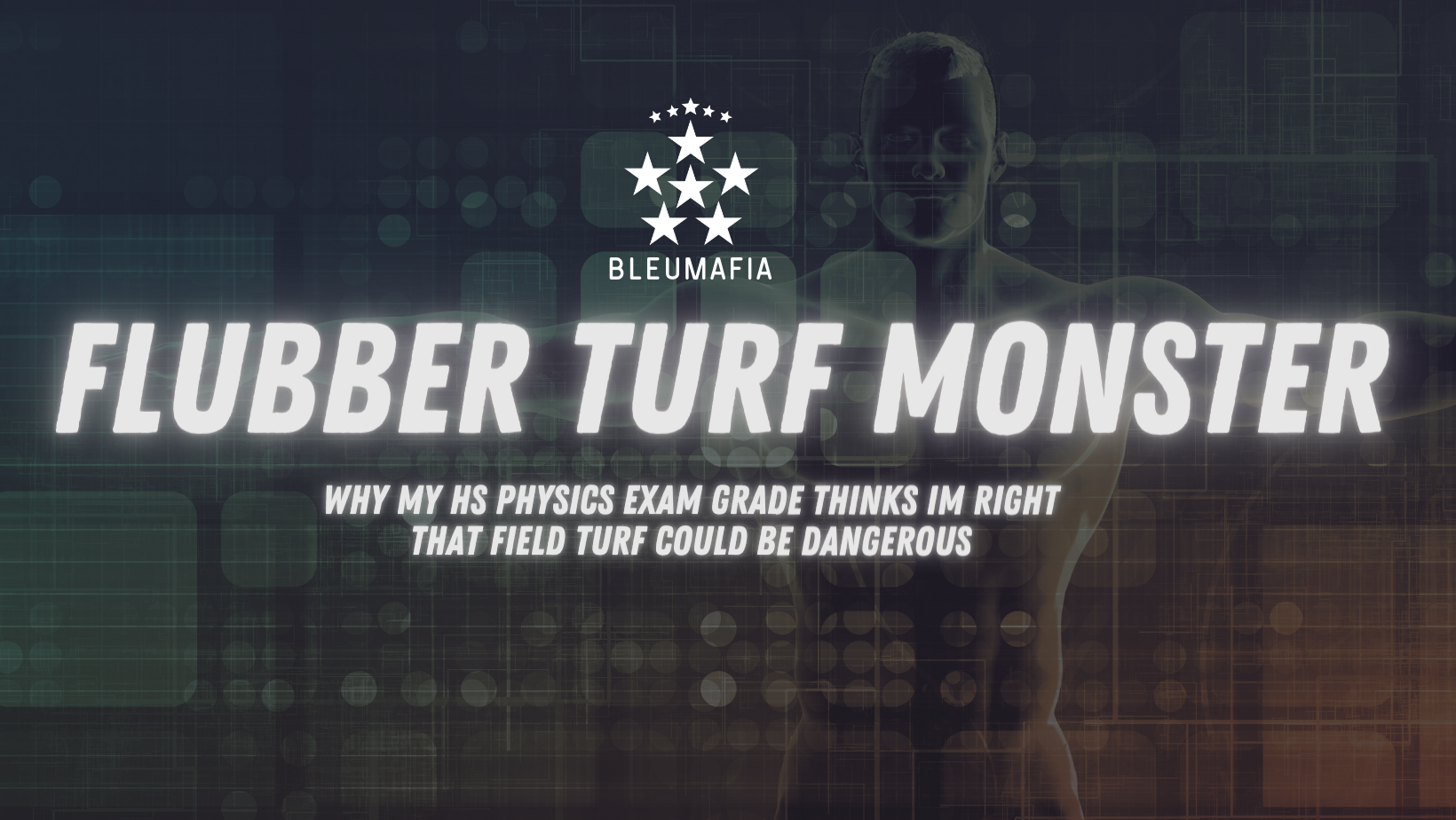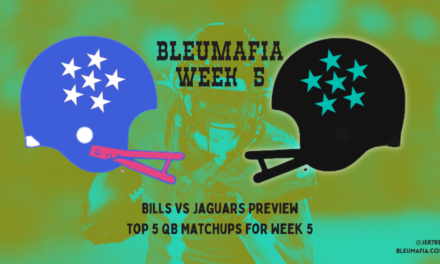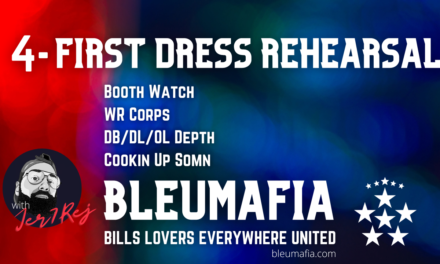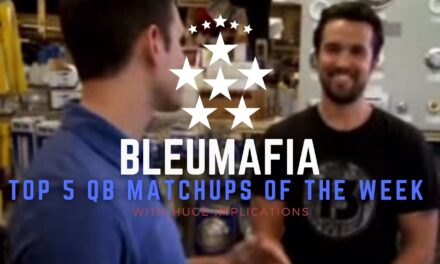I’m not a scientist but I did love science class and I once passed physics with Mr. Benson at Maryvale. I enjoy a great experiment, sports science is something I’ve always sought to quantify. Whether it be the temperature control of a shooting sleeve or under armor or desired traction of sneaker, I’m a big believer in “look good feel good, feel good play good.”
I’m always willing to consider the empirical possibilities of ritualistic sports oddity. One theory I have here for the Tin Hat Tim Theory is personal to me, as I’ve theorized my own injuries inflicted by the turf monster. I think turf leads to more concussions, and more torn ACLs.
I’m not talking about the turf monster that trips someone and causes every ballcoach to joke in practice about, also known as the sniper.
I’m referring to actual turf.. The turf we see most professionals play on, and even most high schools play on. I once read a Donavan McNabb fantasy magazine breakdown that referred to the former Veterans Stadium field surface as “cement painted green.” This was an era where the early turf was still in the form of astroturf- as many indoor teams chose to have back then. Some teams like the cold weather fast-track Buffalo Bills of the 90’s and the “Greatest Show on Turf” St. Louis Rams of the early 00’s benefitted from the speed and unique nature of the turf.
But god, If you were to lose some skin on it or slam your skull off of it, you know how that felt.
Turf Shoes or Cleats?
Turf shoes in this era from the 70s into the late 90s featured tiny beaded rubber sneaker-like soles, but not full length cleats. You just.. didnt wear hard cleats on turf. Cleats were for grass, and turf shoes, or even Jordans were for turf/indoor. Soccer players know this. The footwear and traction you get has always been important in any sport, especially ones played on grass.
“Flubber.”
For several years, as skulls bounced off concrete, Astro turf was eventually slowly phased out for the new “field turf” you see today. You can skip to the bottom to hear the inventor state that concussions were one big reason why Flubber Fieldturf was invented, to actually help PREVENT Astroturf head injuries.
“Rubber tires!” Was the talk of the town, as it was repeated that the depth of the artificial new grass had soil-like qualities, and was somehow spongy and you could wear cleats. You didn’t need to wear cleats, but you could. Anyone who’s played on it knows how great it feels to first run around on. It feels like you’re going in another gear, and you can stop on a dime. You truly do feel like a better athlete as your body flies along the rubber track and you cut through the rough spongy surface and dig in on an explosive juke.
As the new form of turf first came about to my memory, the Seattle Seahawks were in the process of building a new stadium. At this point, they would be forced to play their home games at Washington University game field, which featured a unique new surface, known only then as “flubber.”
You can read the original press release about Seahawks gift to Washington for new FieldTurf.
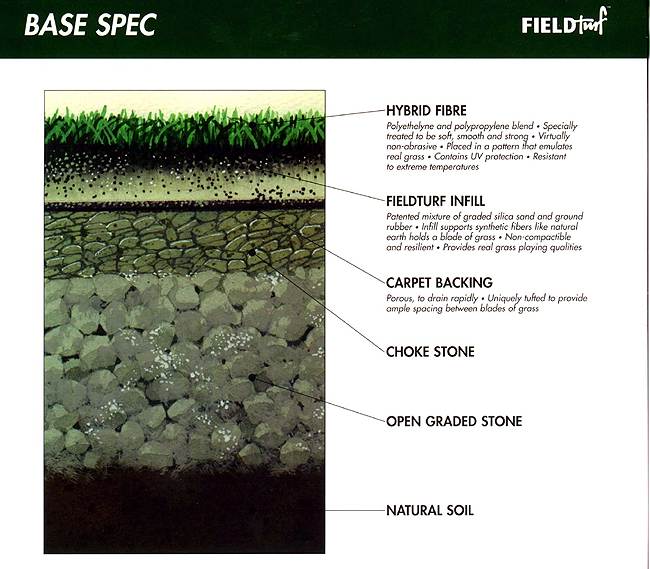
Bounce Bounce – Head Off of Flubber
I am not old enough to ever competitively play on Astroturf, but did experience ‘Field Turf’ upon reaching HS for the first time, and our college got it as I arrived in 2007.
I had a few concussions playing football, but at least 2 of them came in the form of the back of my skull bouncing off of Fieldturf. I was the type of dumb/brave player to not worry about my head, and often held the football as long as I could in scrambling situations, which led me to getting hit more than necessary probably. But when the back of my head hit off of grass, it would slam into the ground, but when my head bounced off of Fieldturf, it bounced back with momentum (in my estimation) caused by the rubber within the surface of the turf. A strange preference to look back on, but I watch guys heads bounce of the Fieldturf constantly, and I’m always quick to point out how it isn’t really better than Astroturf.
If you don’t know, here’s how a concussion happens..
The brain bouncing off of the inside of the skull is how a concussion occurs, and if you look at it this way it would make sense that if a head with a brain inside of it could be more at risk if bouncing off of something that causes g-forces in reaction, rather than absorbing. I’d love to hear an actual experts takes on this.
I would think Mr. Benson my physics teacher may agree that though Astroturf isn’t good for absorbing force or velocity, rubberized turf could be worse than the earth would be, because it offers a spring reaction, rather than absorbing the blow as it may have been designed to. The argument my fiance makes is that the rubber would absorb the shock, which it is clearly intended, but my theory is that the ground is better than turf at all.
Astroturf Vs FieldTurf Vs the Earth
Only science could tell us…. Helmet / concussion research is high, I wonder if they practice bouncing the Crash Test Dummy into FieldTurf.
Knee High In ACL Tears – Rubber on Cleats
The 2nd part of my physics lesson focuses on the rubber on the lower levels of field turf. Because it has rubber, my estimation is that the co-efficient of friction would be different than normal soil, or mud, or frozen soil. I would think that rubber and the surfaces that cleats are made of connect BETTER than grass and cleat materials, based on how good of traction you can get on field turf. I would also love to meet an expert willing to research what the number of ACL tears in sports at every level has been since the invention and expansion of field turf to every level of sports.
Turns out there are a rise in ACL tears.. hm. Go figure. Why??? First lets look at how an ACL is torn- specifically non contact.
Somebody out there has gotta be onto this right?
All I could find is “ACL prevention” programs.. but nobody researching THE TURF MONSTER!
Some research even says that ACLs are happening younger and younger. Could it be that FieldTurf over the years has crept into younger and younger sports groups? Some say that overuse is the issue. Maybe overuse of FieldTurf could be part of the reason? Just a theory..
In conclusion..
I can only speculate. I’m not a scientist. I got an 83 on my Regents Physics exam in 07. But I’d love to see real data and science on the following hypotheses:
Field turf could cause a higher rate of concussions, due to higher rate of speed of brain velocity and impact inside skull VS same rate on grass (due to rubber)
Field turf could cause a higher rate of knee injuries due to higher friction rate of cleat on/in rubber pellets turf vs natural terrain.
Anyone ready to run an experiment and start collecting data?
Here’s the man who invented it, and why he did. Wonder if he knew he was going to lead to this article leading to future research!

